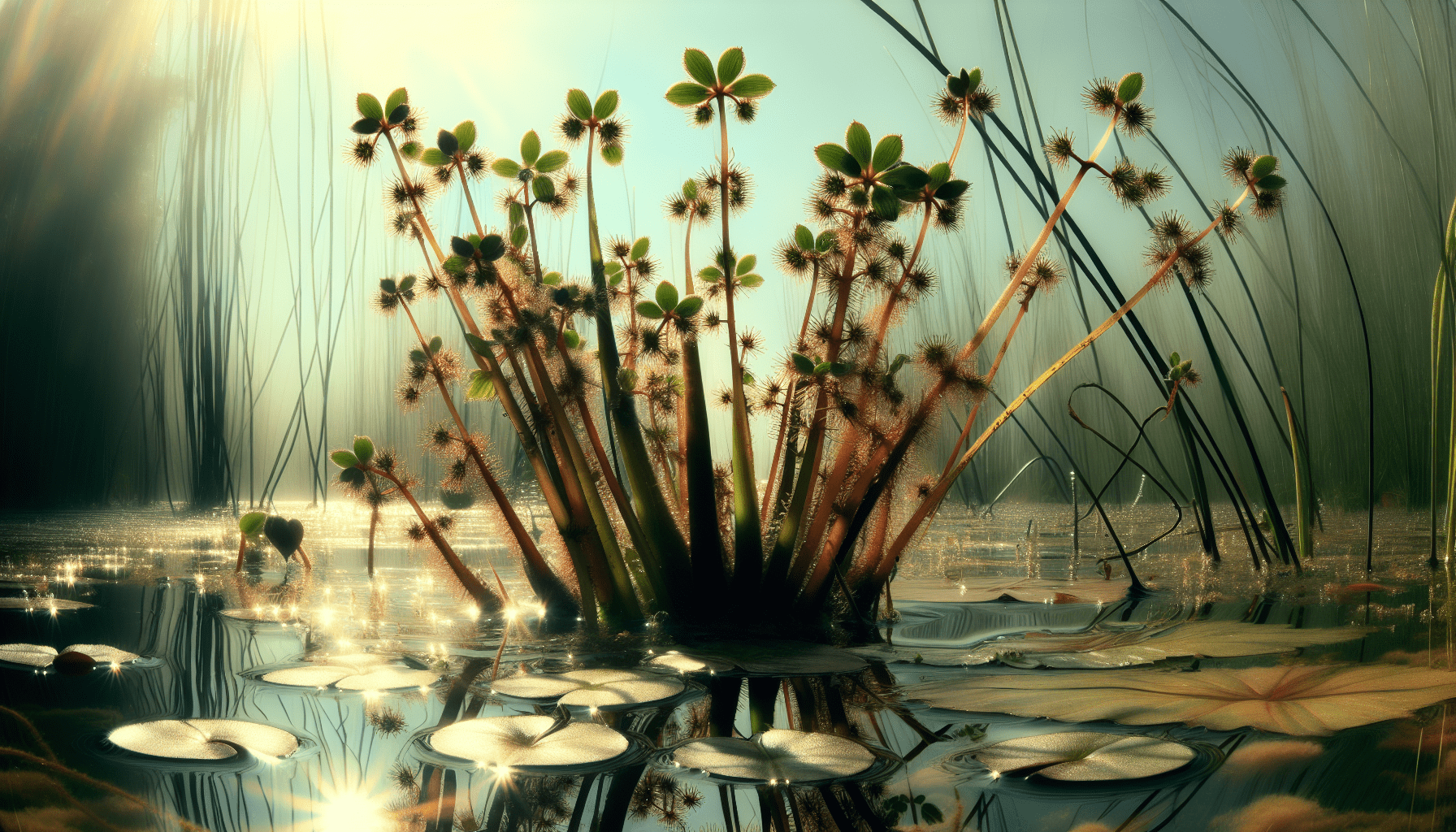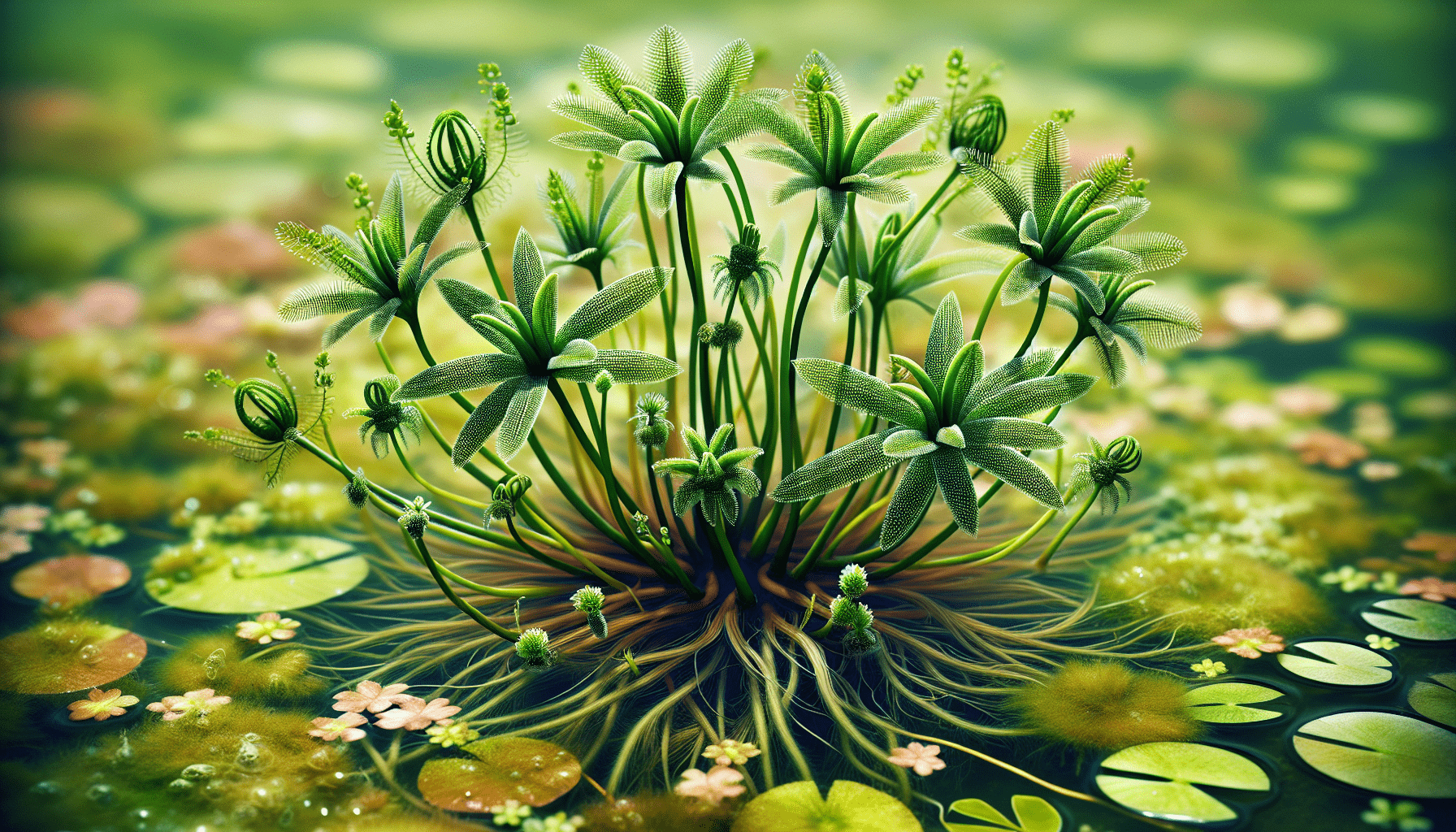The following discourse explores the intricate facets of the aquatic weed known as Dulichium Arundinaceum. This submerged grass-like botanical species – bearing a decidedly marginal and rarely imperative status within the aquatic plant world — nevertheless, is significant due to its peculiar biological features and its potential impacts on floral biodiversity and aquatic ecosystems. It is an often understudied species, yet your understanding of its properties, growth habits, and environmental relationships could offer valuable insights into its ecological implications in the broader context of aquatic botany and ecological balance.
Taxonomical Classification of Dulichium Arundinaceum
Kingdom, Phylum, and Class
Dulichium arundinaceum, also renowned as the Three-Way Sedge, is a native aquatic weed. From a taxonomical standpoint, it falls within the Kingdom Plantae. This Kingdom consists of an incredible diversity of photosynthetic organisms that contain cellulose cell walls and are typically stationary. It belongs to the Phylum Tracheophyta, frequently referred to as the vascular plants due to their complex conducting system composed of xylem and phloem tissues. The Class Monocotyledoneae, within which Dulichium arundinaceum exists, characterizes the members with one initial seed leaf (cotyledon) in the seedling.
Order and Family
Dulichium arundinaceum is under the Order Poales, a group of flowering plants renowned for their grass-like morphology and shared reproductive structures. The Order Poales accommodates the family Cyperaceae, comprising mostly grass-like plants. As a member of the Cyperaceae family, this aquatic plant exhibits shared attributes like inconspicuous flowers and a preference for moist or aquatic conditions.
Genus and Species
Subsequent to Family, Dulichium arundinaceum applies to the Genus Dulichium, which currently is the only species classified under this genus. The species’ name “arundinaceum” stems from its reed-like (Arundo-like) appearance.
Morphological Characteristics of Dulichium Arundinaceum
Leaf Structure
Dulichium arundinaceum boasts a unique leaf structure fitting for its aquatic lifestyle. Its leaves are rolled in the bud and display a broad ovate-lanceolate shape when mature. The leaf blades are firm, pointed, flat, and about 1.5 to 3.5 mm wide.
Stem and Underground Rhizomes
You will find that the stem of the Dulichium arundinaceum is erect, tall, and smooth, often reaching up to 1 m in height. It grows from a comprehensive system of underground rhizomes, making it robust and capable of colonizing new habitat swiftly.
Flower and Fruits Structure
The floral structure of Dulichium arundinaceum is inconspicuous. The tiny flowers, grouped in spikes at the stem tops, bloom between June and September. The fruits of this species are tiny achenes, slender and cylindrical, offering a valuable food source to aquatic and terrestrial wildlife.

Habitat and Distribution of Dulichium Arundinaceum
Natural Habitat
In terms of natural habitat, Dulichium arundinaceum holds a lean towards wet environments, commonly found in freshwater marshes, swamps, and along the shores of rivers and lakes. It thrives in waterlogged soils and shallow water, making it predominantly an aquatic species.
Global Distribution
Its global distribution primarily covers North America, spanning from northern Canada down to the southeastern United States. There are also occurrences in certain regions of Eurasia.
Preferred Conditions for Growth
The growth of Dulichium arundinaceum is ideally facilitated under full sun to part-shade conditions. It prefers neutral or slightly acidic soil and the standing water or saturated soils common in its natural habitat.
Life Cycle of Dulichium Arundinaceum
Seed Germination
The life cycle of Dulichium arundinaceum commences with seed germination. The seeds, once they fall into the right environmental conditions, start to germinate, developing into seedlings.
Vegetative Growth
The vegetative growth phase follows germination. The young plants send out rhizomes, which grow underground and send up new shoots, facilitating the spread and establishment of the plant.
Reproductive Stage
The reproductive stage follows, characterized by the development of flower spikes and subsequent production of achenes. This stage is typically during the warm summer months.
Senescence and Overwintering
Following seed dispersal, the plants fade into senescence, receding for the winter. However, the rhizomes remain alive below ground, allowing the plant to regrow and reproduce the following spring.

Role of Dulichium Arundinaceum in Ecosystem
Importance in Aquatic Food Chain
Despite its reputation as an aggressive colonizer, Dulichium arundinaceum plays an essential role in the aquatic food chain. Many animals, particularly birds and insects, feed on its seeds.
Contribution to Habitat Complexity
Its dense, spreading growth can contribute to habitat complexity, offering cover and spawning habitats for a variety of aquatic organisms.
Role in Nutrient Cycling
Through its active growth and decaying matter, Dulichium arundinaceum aids nutrient cycling, contributing to the overall ecosystem productivity of its habitat.
Potential Threat of Dulichium Arundinaceum
Invasive Nature
Given its aggressive growth and widespread rhizomes, Dulichium arundinaceum may become invasive, especially in areas outside of its natural range.
Impact on Aquatic Biodiversity
Due to its dense growth habit, it may out-compete and displace other native aquatic species, reducing biodiversity and altering habitats.
Effect on Water Quality
Overabundance of Dulichium arundinaceum may potentially alter oxygen levels and other water quality parameters, potentially affecting other aquatic species.
Control and Management of Dulichium Arundinaceum
Mechanical Control
Mechanical control options include hand-pulling and cutting. Though time-consuming, regular removal of the plant can help control its spread, especially around the edges of infestations.
Chemical Control
Chemical control, specifically in the form of herbicides, may be used to manage the plant. However, application timing and continual use of such treatment are necessary for effective control.
Biological Control Method
Biological control options remain limited for Dulichium arundinaceum. Researchers are still exploring potential natural enemies that may help control its spread.
Uses and Benefits of Dulichium Arundinaceum
In Herbal Medicine
Several indigenous communities have utilized Dulichium arundinaceum in herbal medicine, attributing to it potential therapeutic benefits.
As a Source of Biomass
Due to its vigorous growth, Dulichium arundinaceum has potential as a sustainable source of biomass for energy production.
Potential for Phytoremediation
In studies, Dulichium arundinaceum has shown promise for phytoremediation, the use of plants to absorb and mitigate pollutants in soil or water.
Research on Dulichium Arundinaceum
Current Research Studies
Current research on Dulichium arundinaceum mainly focuses on its ecology, invasive potential, and possible control methods.
Breakthrough Discoveries
As of now, no significant breakthrough discoveries pertaining to Dulichium arundinaceum have been made but its potential for phytoremediation is an emerging subject of interest.
Future Research Directions
Future research is likely to explore this species’ potential in biomedical applications, phytoremediation, and renewable energy production.
Interesting Facts about Dulichium Arundinaceum
Etymology of the Name Dulichium Arundinaceum
The name ‘Dulichium’ originates from Greek ‘dolichos’ meaning long, probably referring to its long, slender stems or inflorescence, while ‘arundinaceum’ means ‘reed-like’.
Unique Ecological Relationships
Despite being a potential invasive species, Dulichium arundinaceum harbors unique ecological relationships. It interacts with a number of animals and insects that rely on it for food, habitat, and cover.
Survival Strategies in the Aquatic Environment
Dulichium arundinaceum has effectively evolved to thrive in aquatic environments. Its long, sturdy rhizomes allow it to tolerate a wide range of water depths, thus outcompeting other aquatic species in certain habitats.